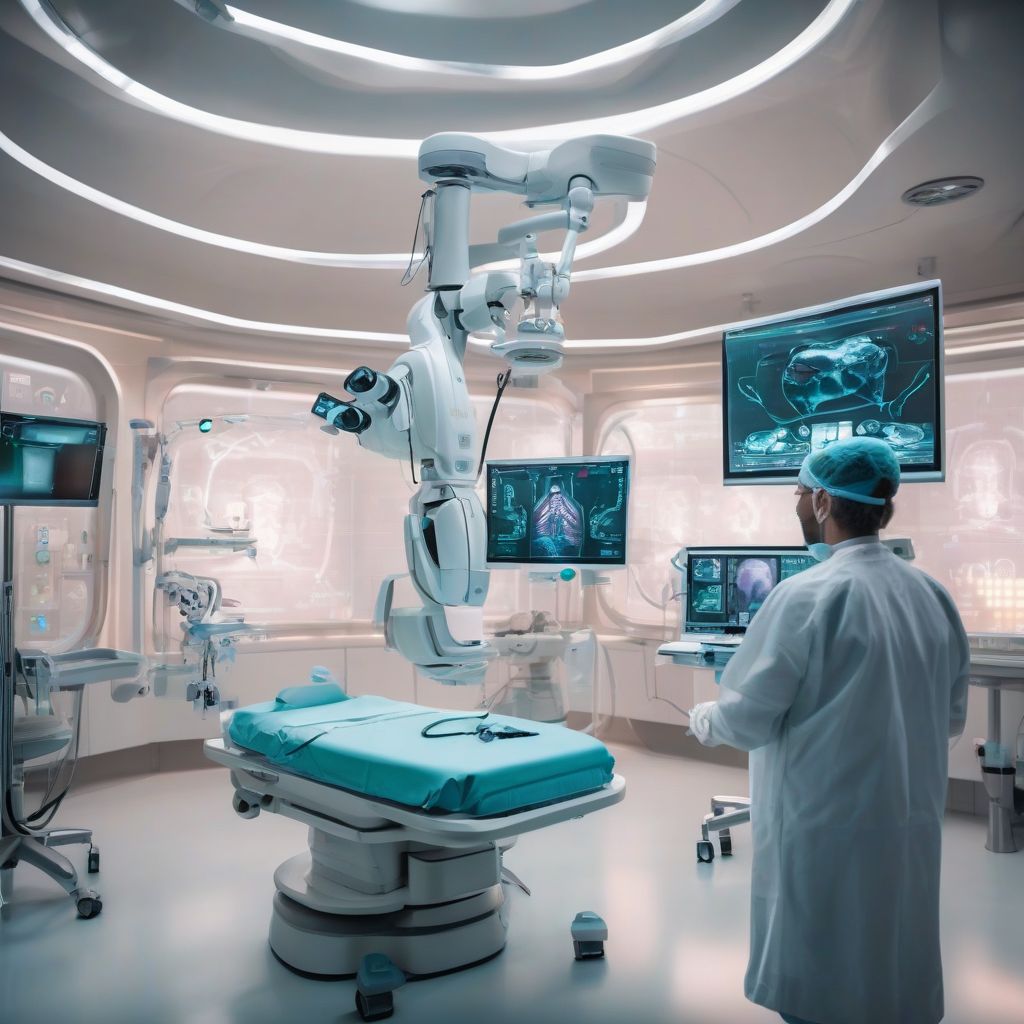Imagine a world where surgeries are performed with unparalleled precision, personalized medications are compounded with robotic efficiency, and factories hum with collaborative robots working seamlessly alongside humans. This isn’t science fiction; it’s the rapidly approaching future of robotics in healthcare and manufacturing.
The integration of robotics into these crucial sectors promises a revolution, boosting efficiency, improving outcomes, and creating new possibilities. But what exactly does this future hold? Let’s delve into the exciting advancements, challenges, and potential impact of this transformative technology.
Robotics in Healthcare: A New Era of Patient Care
Surgical Precision and Minimally Invasive Procedures
Robotic surgery is already transforming operating rooms, offering surgeons enhanced dexterity, 3D visualization, and greater control. The da Vinci Surgical System, a prominent example, enables minimally invasive procedures, resulting in smaller incisions, reduced pain, and faster recovery times. Future advancements are focused on developing even more sophisticated robotic systems with haptic feedback, allowing surgeons to “feel” tissues remotely, and AI-powered assistance for complex procedures. As Dr. Robert Lefkowitz, Nobel laureate in Chemistry, hypothetically remarked, “The future of surgery isn’t just about smaller incisions; it’s about leveraging robotics and AI to achieve outcomes we never thought possible.”
Personalized Medicine and Drug Discovery
Robotics is also playing a crucial role in personalized medicine, automating the process of tailoring treatments to individual patients. Robots can precisely compound medications based on a patient’s unique genetic makeup and medical history, minimizing side effects and maximizing efficacy. Furthermore, robotic automation accelerates drug discovery by screening vast libraries of compounds and analyzing complex biological data, speeding up the development of new therapies.
Robotic Assistance for Elderly Care
As the global population ages, the demand for elderly care is skyrocketing. Robots offer a potential solution, assisting with daily tasks like bathing, dressing, and medication reminders. Companion robots can also provide social interaction and emotional support, combating loneliness and improving the overall quality of life for seniors. While ethical considerations surrounding robot companionship require careful consideration, the potential benefits for an aging population are immense.
Robotics in Manufacturing: The Rise of the Smart Factory
Enhanced Productivity and Efficiency
Robots have long been a staple in manufacturing, automating repetitive tasks and increasing production speed. The future of manufacturing robotics lies in collaborative robots, or “cobots,” designed to work safely alongside human workers. Cobots can handle heavy lifting, precision assembly, and quality inspection, freeing up human workers for more complex and creative tasks. This synergy between humans and robots boosts overall productivity and efficiency, leading to greater output and reduced costs.
Adaptable and Flexible Manufacturing
Traditional manufacturing setups often struggle to adapt to changing product demands. Robotics offers the flexibility to quickly reconfigure production lines, allowing manufacturers to easily switch between different products or customize production based on individual customer needs. This adaptability is crucial in today’s dynamic market, enabling companies to respond quickly to evolving trends and consumer preferences.
Improved Safety and Reduced Workplace Hazards
Manufacturing environments can be hazardous for human workers. Robots can take over dangerous tasks, such as welding, painting, and handling hazardous materials, minimizing the risk of workplace injuries. This not only improves safety but also creates a more appealing work environment, attracting and retaining skilled workers.
 Future of Robotics in Healthcare
Future of Robotics in Healthcare
Challenges and Ethical Considerations
While the future of robotics in healthcare and manufacturing is bright, it’s important to acknowledge the challenges and ethical considerations. Job displacement due to automation is a valid concern, requiring proactive strategies for retraining and upskilling the workforce. Data security and privacy are also paramount, particularly in healthcare, where sensitive patient information must be protected. Furthermore, ethical dilemmas surrounding robot companionship, AI decision-making in healthcare, and the potential for autonomous weapons systems require careful consideration and robust regulatory frameworks.
Conclusion: Embracing the Robotic Revolution
The future of robotics in healthcare and manufacturing is poised for remarkable growth and transformation. From robotic surgeons performing complex procedures with unparalleled precision to collaborative robots enhancing productivity in smart factories, the potential benefits are immense. By addressing the challenges and ethical considerations proactively, we can harness the power of robotics to create a healthier, more efficient, and more prosperous future. What are your thoughts on the role of robotics in these crucial sectors? Share your insights and join the conversation below.



